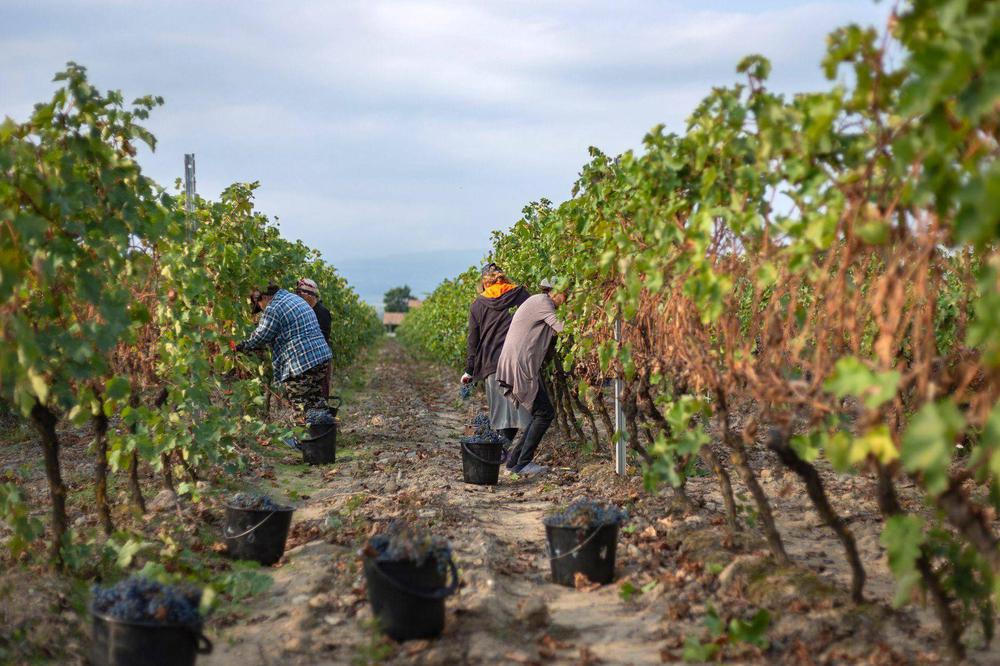Alazani Valley, a region of profound natural beauty and cultural richness, stands prominently in Georgia, a country known for its diverse landscapes and deep historical roots. This article delves into the multifaceted aspects of Alazani Valley, exploring its geographical features, climatic conditions, viticulture, historical significance, and tourism prospects. Ideal for travelers seeking an authentic experience, the valley offers a blend of scenic beauty, rich winemaking heritage, and historical sites, making it a noteworthy destination for tourism and cultural exploration.
Geographical Profile of Alazani Valley
Situated in Eastern Georgia, the Alazani Valley stretches along the Alazani River, flanked by the Greater Caucasus Mountains to the north and the Gombori Range to the south. This topographical positioning gifts the valley with a unique landscape, characterized by its fertile plains and gentle slopes. Covering an area of significant size, the valley's length extends approximately 100 kilometers (about 62 miles), while its width varies, reaching up to 20 kilometers (approximately 12 miles) at its broadest points.
The Alazani River, a crucial lifeline of the valley, meanders through this landscape, playing a vital role in the region’s agriculture and ecology. Originating from the Greater Caucasus, the river eventually flows into the Kura River, further emphasizing its importance in the regional water system. The presence of this river not only enhances the valley’s natural beauty but also contributes significantly to its agricultural productivity.
Climate and Environmental Conditions
Alazani Valley's climate is predominantly continental, with long, warm summers and moderately cold winters. The Greater Caucasus Mountains act as a natural barrier, shielding the valley from cold northern winds, which results in a relatively mild climate. Temperature variations are notable, with summer temperatures often exceeding 20°C (68°F), creating an ideal environment for viticulture and agriculture.
The valley's biodiversity is rich, characterized by a variety of flora and fauna. The fertile soil and favorable climate conditions support a diverse range of plant life, including deciduous forests, shrubs, and a wide array of agricultural crops. The region is also home to numerous species of birds and mammals, contributing to its ecological diversity.
Alazani Valley's Viticulture and Winemaking Heritage
Alazani Valley is renowned for its longstanding tradition of winemaking, a craft deeply ingrained in Georgian culture. The valley's favorable climatic conditions and fertile soils provide an ideal terroir for grape cultivation. This region is particularly known for its indigenous grape varieties, such as Rkatsiteli and Saperavi, which are central to the production of some of Georgia’s most acclaimed wines.
The valley's winemaking history dates back thousands of years, with archaeological findings suggesting that viticulture in the region could be as old as 8,000 years. This deep-rooted winemaking tradition is a significant aspect of the valley's cultural heritage and has contributed to its reputation as a key wine-producing region in Georgia.
Modern wineries and traditional wine cellars ('Marani') are scattered throughout the valley, offering visitors an opportunity to experience the ancient art of Georgian winemaking. These establishments often provide tours and wine tastings, allowing tourists to immerse themselves in the local viticulture and savor the unique flavors of Georgian wines.
Historical Significance and Cultural Landmarks
The history of Alazani Valley is as rich and varied as its landscape. Throughout the centuries, this region has witnessed the rise and fall of various civilizations, each leaving its mark on the cultural tapestry of the valley. Ancient fortresses, churches, and monasteries dot the landscape, providing a window into Georgia's past. Notable among these is the Alaverdi Monastery, dating back to the 6th century, which stands as a testament to the valley's religious and architectural heritage.
In addition to religious sites, the valley is peppered with historical fortifications, including the Gremi fortress, a 16th-century architectural complex that once served as the capital of the Kingdom of Kakheti. These historical structures are not just remnants of the past but are integral to understanding the region's historical significance and the resilience of its people.
The Role of Agriculture in Alazani Valley
Agriculture plays a pivotal role in the economy of Alazani Valley. The fertile lands, nourished by the Alazani River, are ideal for cultivating a variety of crops. Apart from viticulture, which is the backbone of the valley's agriculture, the region is also known for its production of fruits, such as peaches, apples, and pomegranates, and vegetables. This agricultural abundance not only sustains the local economy but also contributes to the culinary diversity for which Georgia is renowned.
The traditional farming practices, combined with modern agricultural techniques, ensure the sustainability and quality of produce from the valley. The local markets, brimming with fresh produce, offer a glimpse into the agricultural wealth of Alazani Valley and provide an authentic experience for visitors interested in the region's culinary offerings.
Tourism and Travel in Alazani Valley
For travelers, Alazani Valley offers a unique blend of natural beauty, historical exploration, and gastronomic delight. The valley is becoming an increasingly popular destination for both local and international tourists, drawn by its scenic landscapes, rich cultural heritage, and renowned wineries. Various tours are available, ranging from wine-tasting and culinary tours to hiking and cultural heritage tours, catering to a wide spectrum of interests.
Accommodation options in the valley range from luxury hotels to family-run guesthouses, offering visitors a choice of comfort and local experience. The hospitality of the Georgian people, combined with the valley's natural and cultural offerings, makes it a welcoming destination for all types of travelers.
Challenges and Conservation Efforts
While Alazani Valley thrives as a center of agriculture and tourism, it also faces environmental and developmental challenges. Issues such as water management, soil erosion, and sustainable tourism are at the forefront of conservation efforts. Local authorities, along with various international organizations, are working to address these challenges, ensuring that the valley's natural and cultural heritage is preserved for future generations.
Efforts are being made to promote sustainable agricultural practices and responsible tourism, which are crucial for maintaining the ecological balance and cultural integrity of the region. These initiatives not only help in conserving the valley's environment but also contribute to the sustainable development of the local communities.
Conclusion
Alazani Valley, with its stunning landscapes, rich history, and vibrant culture, stands as a jewel in Georgia's crown. Whether it’s for the love of nature, interest in historical sites, passion for wine, or a culinary adventure, the valley offers something for every traveler. As a symbol of Georgia’s natural beauty and cultural richness, the valley continues to enchant visitors from around the globe, making it a must-visit destination for those exploring this part of the world.

 Rivers of Georgia
Rivers of Georgia
 Mtkvari River
Mtkvari River
 Pankisi Valley
Pankisi Valley




